Aluminum Alloy Wheels Made by Die Casting (Part one)
At the Automechnika exhibition held in Frankfurt in September 2022, the famous German wheel manufacturer BBS and the German company ENTEC-STRACON jointly launched aluminum alloy wheels mass-produced using the TURBO-DRUCK die casting.
BUX, the general manager of ENTEC-STRACON, Germany, and the representative of BBS company jointly demonstrated the aluminum alloy passenger wheel hub made by TURBO-DRUCK methods
The URBO-DRUCK die casting is an invention patent of Professor Klein, a famous German light alloy casting expert and former director of the Manufacturing Department of the Allen University of Technology. Compared with traditional aluminum wheel manufacturing methods such as low-pressure casting and gravity casting, the TURBO-DRUCK die casting method is applied to the production of aluminum alloy wheels, which can reduce material by 20 to 30% and cost by 30 to 40%, which can be called a subversive aluminum alloy wheel manufacturing technology. The technology has been mass-produced and the products have been put into the market. Combined with the worldwide carbon peaking and carbon neutrality policies, it is bound to have a major impact on the existing aluminum alloy wheel industry.
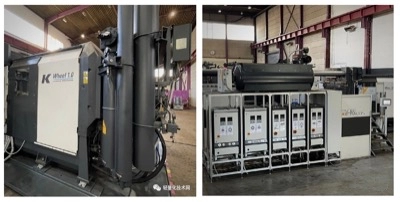
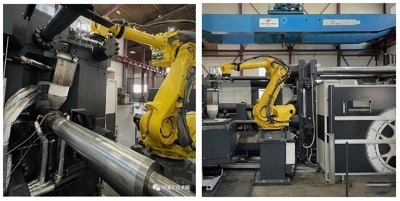
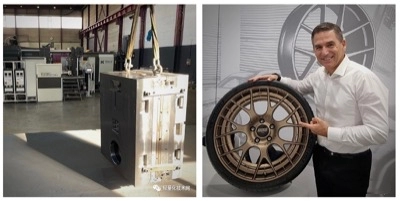
TURBO-DRUCK die casting process and equipment applied to the production site of aluminum alloy wheels
1. Introduction
The basis for safe and comfortable driving for light alloy wheels in vehicles is the unsprung mass of the vehicle, so it is crucial that the weight of the wheels be as low as possible. The automotive industry prefers light alloy wheels due to inertia and rotational moments. For this reason, wheel manufacturers try to achieve a lightweight structure on the wheel and reduce weight through the choice of materials.
The existing technology is casting wheels or forging wheels in aluminum or magnesium alloys, among which aluminum alloy wheels manufactured by low-pressure die casting process account for a very high percentage, as shown in figure 1.

Figure 1 Cast and forged wheels
In addition to the above-mentioned requirements for the driving dynamics of the wheel, more and more aerodynamic or crash-related requirements also play an important role in the manufacture of the wheel. Since the aerodynamic properties of the wheel are directly related to fuel consumption and CO2 emissions, there is also an increased need for relevant action by the legislature on wheel companies, as shown in Figure 2.
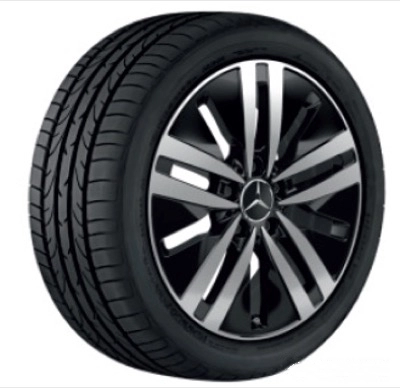
Figure 2 Cast wheels meeting the requirement for aerodynamics
The requirements of certification in the overall registration of passenger cars, especially WVTA (Whole Vehicle Type Approval) combined with WLTP (Worldwide Harmonized Light Vehicle Test Procedure) intensify the requirements for emission of vehicles and involve all relevant models of vehicles. The requirement for vehicle type testing through the globally standardized Lightweight Vehicle Test Procedure (WLTP) is forcing automakers to reconsider the design of vehicle components in terms of aerodynamics and lightweight structure. In addition, with the continuous development of the trend of vehicle electrification, the demand for lightweight electric vehicles is increasing, and these demands also promote the above-mentioned requirements for the lightweight structure and aerodynamics of vehicles, as shown in Figure 3.
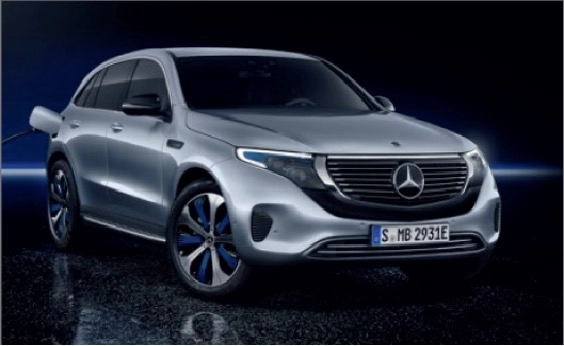
Figure 3 Mercedes EQ model with aerodynamic cast wheels
Depending on the vehicle type, different wheel sizes are used, and these wheels tend to be less aerodynamic and cause a higher blocking function in frontal and offset collisions, which would make the result worsened for the entire car series classified according to emission standards. Considering the requirements of lightweight design, aerodynamics and collision, these growing demands require changes in the production process of automobile wheels, because the traditional low-pressure casting process can no longer meet the above requirements well, as shown in Figure 4.

Figure 4. Offset crash results for Mercedes EQ models
BUX, the general manager of ENTEC-STRACON, Germany, and the representative of BBS company jointly demonstrated the aluminum alloy passenger wheel hub made by TURBO-DRUCK methods
The URBO-DRUCK die casting is an invention patent of Professor Klein, a famous German light alloy casting expert and former director of the Manufacturing Department of the Allen University of Technology. Compared with traditional aluminum wheel manufacturing methods such as low-pressure casting and gravity casting, the TURBO-DRUCK die casting method is applied to the production of aluminum alloy wheels, which can reduce material by 20 to 30% and cost by 30 to 40%, which can be called a subversive aluminum alloy wheel manufacturing technology. The technology has been mass-produced and the products have been put into the market. Combined with the worldwide carbon peaking and carbon neutrality policies, it is bound to have a major impact on the existing aluminum alloy wheel industry.



TURBO-DRUCK die casting process and equipment applied to the production site of aluminum alloy wheels
1. Introduction
The basis for safe and comfortable driving for light alloy wheels in vehicles is the unsprung mass of the vehicle, so it is crucial that the weight of the wheels be as low as possible. The automotive industry prefers light alloy wheels due to inertia and rotational moments. For this reason, wheel manufacturers try to achieve a lightweight structure on the wheel and reduce weight through the choice of materials.
The existing technology is casting wheels or forging wheels in aluminum or magnesium alloys, among which aluminum alloy wheels manufactured by low-pressure die casting process account for a very high percentage, as shown in figure 1.

Figure 1 Cast and forged wheels
In addition to the above-mentioned requirements for the driving dynamics of the wheel, more and more aerodynamic or crash-related requirements also play an important role in the manufacture of the wheel. Since the aerodynamic properties of the wheel are directly related to fuel consumption and CO2 emissions, there is also an increased need for relevant action by the legislature on wheel companies, as shown in Figure 2.

Figure 2 Cast wheels meeting the requirement for aerodynamics
The requirements of certification in the overall registration of passenger cars, especially WVTA (Whole Vehicle Type Approval) combined with WLTP (Worldwide Harmonized Light Vehicle Test Procedure) intensify the requirements for emission of vehicles and involve all relevant models of vehicles. The requirement for vehicle type testing through the globally standardized Lightweight Vehicle Test Procedure (WLTP) is forcing automakers to reconsider the design of vehicle components in terms of aerodynamics and lightweight structure. In addition, with the continuous development of the trend of vehicle electrification, the demand for lightweight electric vehicles is increasing, and these demands also promote the above-mentioned requirements for the lightweight structure and aerodynamics of vehicles, as shown in Figure 3.

Figure 3 Mercedes EQ model with aerodynamic cast wheels
Depending on the vehicle type, different wheel sizes are used, and these wheels tend to be less aerodynamic and cause a higher blocking function in frontal and offset collisions, which would make the result worsened for the entire car series classified according to emission standards. Considering the requirements of lightweight design, aerodynamics and collision, these growing demands require changes in the production process of automobile wheels, because the traditional low-pressure casting process can no longer meet the above requirements well, as shown in Figure 4.

Figure 4. Offset crash results for Mercedes EQ models